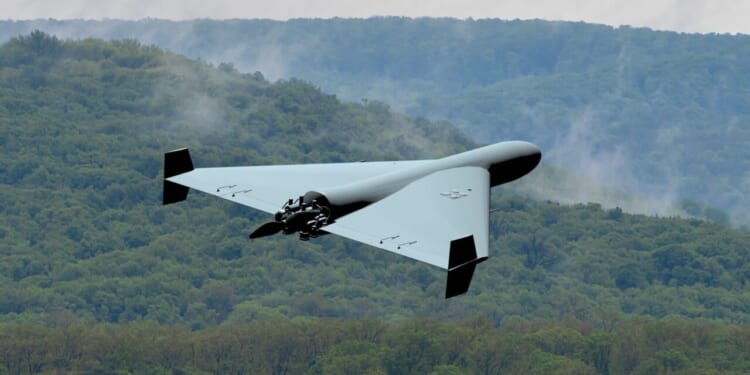The Russian Aerospace Forces have failed to degrade Ukraine’s critical infrastructure to the point that Kyiv surrenders.
In September, the Russian military launched over 5,000 suicide drones against Ukraine as part of a larger air campaign against its neighbor.
Russia is trying to force Ukraine to the negotiation table by destroying the country’s critical infrastructure.
Russian Suicide Drone Trends
According to the British Ministry of Defence’s latest intelligence estimate, the Russian forces launched “approximately 5,500 one-way attack uncrewed aerial systems (OWA UAS) against Ukraine” in September. These suicide drone launches were in addition to air and missile strikes.
Both sides use suicide drones for tactical and strategic strikes.
September saw a significant increase in Russian suicide drone strikes compared to the previous month. In August, the Russian forces launched approximately 4,100 suicide drones against Ukraine. But there is a reason for the lower number of launches. Russia “almost certainly limited” its suicide drone strikes in an attempt “to demonstrate a purported willingness to take part in meaningful negotiations” with Ukraine.
Russian president Vladimir Putin even met with US president Donald Trump in Alaska as part of these efforts to find a negotiated solution to the conflict. In February, the war will reach its four-year anniversary.
Not Just Drones: Russian Airstrikes Are Pounding Ukraine
In addition to the thousands of suicide drones against Ukraine, the Russian military has maintained a high air strike tempo. In September, the Russian Aerospace Forces conducted four large-scale strike packages using strategic bombers.
For example, on September 7, the Russian Aerospace Forces launched more than 800 ballistic and cruise missiles and suicide drones against Ukraine. Overall, in September, Russia launched over 70 of its premier AS-23a Kodiak air-launched cruise missiles.
“This combination of premier missiles alongside mass OWA UAS attempts to complicate Ukrainian air defence efforts and increase the survivability of Russian munitions,” the British Ministry of Defence stated.
Although the Ukrainian air defense umbrella is at a much better position than it was at the start of the conflict, even sporting some of the best air defense systems in the world, such as the MIM-104 Patriot, IRIS-T, and NASAMS, Russian suicide drones and missiles still get through. However, the number of munitions that pass the Ukrainian air defenses is significantly lower compared to the start of the conflict.
Ukrainian Critical Infrastructure: The Top Target
Ukraine’s critical infrastructure remains the top target of Russian suicide and missile attacks.
“Ukraine’s critical national infrastructure (CNI) has almost certainly become Russia’s priority target, with Russia attempting to degrade Ukraine’s energy network ahead of the winter period, as it has done previously in the conflict,” the British Ministry of Defence concluded in its intelligence assessment.
The strikes against Ukraine’s energy grid have continued in October, with four large-scale strikes against Ukrainian critical infrastructure thus far.
Despite repeated efforts every winter, the Russian Aerospace Forces have failed to degrade Ukraine’s critical infrastructure to such a degree that would bring Ukraine to the negotiation table ready to meet Moscow’s demands. To be sure, Ukrainian citizens throughout the country have often lost access to basic necessities, such as water, electricity, heat, and internet, due to Russian missile and drone strikes. However, the degree of destruction has never been as severe as the Kremlin would have wanted.
About the Author: Stavros Atlamazoglou
Stavros Atlamazoglou is a seasoned defense journalist specializing in special operations and a Hellenic Army veteran (national service with the 575th Marine Battalion and Army HQ). He holds a BA from the Johns Hopkins University and an MA from the Johns Hopkins’ School of Advanced International Studies (SAIS). His work has been featured in Business Insider, Sandboxx, and SOFREP.
Image: Shutterstock.
















